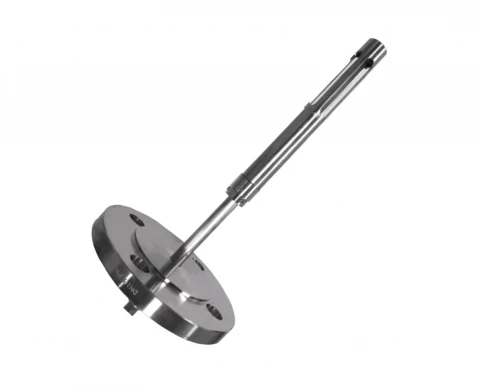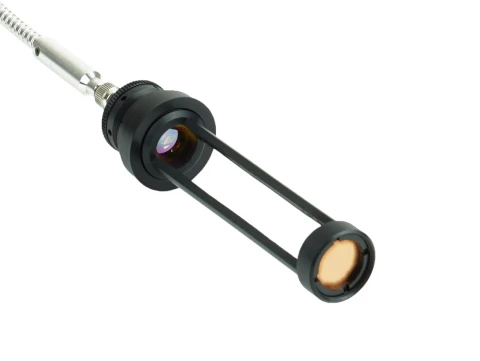Description
Gas Transmission Infrared Fiber Optic Probe for Gases
- On-line transmission spectroscopy in gases
- High throughput in any part of NIR-MIR spectra
- Flexible and robust for industrial applications
- Compatible with any spectrometer
FlexiSpec® product line includes the latest generation of Transmission infrared fiber optic probes for gases to be used with any spectrometer or photometer. The design of Transmission Fiber Probe for gases is based on a bifurcated fiber bundle.
Due to low Mid IR-attenuation in gases the collimated beam design of double pass (or multiple pass) gas cell is needed to increase optical path length to 10 – 40cm. This design is easily realized by the mean of the collimating objective and reflecting mirror cell.
Gas Transmission Infrared Fiber Optic Probe for Gases (Polycrystalline IR)
Specifications
| Transmission: | 3 – 18 um |
|---|---|
| Temperature Range: | -50 – 140 C |
| Sensitivity: | >1ppm depending on optical path, spectrometer performance, gases in test |
Features
- Online Transmission Spectroscopy Capability: Allows for the real-time analysis of gases through transmission spectroscopy, facilitating immediate data collection and analysis.
- Broad NIR-MIR Spectral Throughput: Engineered to provide high throughput across the Near-Infrared to Mid-Infrared (NIR-MIR) spectra, making it versatile for a wide array of gas detection and analysis tasks.
- Industrial Design: Built to be both flexible and durable, ensuring suitability for various industrial settings and applications.
- Universal Spectrometer Compatibility: Designed to work with any spectrometer, offering flexibility in integration with existing systems.
- Part of the FlexiSpec® Line: Belongs to the latest generation of Transmission infrared fiber optic probes, indicating cutting-edge technology and enhanced performance capabilities.
- Bifurcated Fiber Bundle Design: Incorporates a bifurcated fiber bundle to optimize gas analysis efficiency.
- Extended Optical Path Length: Utilizes a collimated beam in a double or multiple pass gas cell to extend the optical path length to 10 – 40cm, improving detection sensitivity by compensating for low Mid-IR attenuation in gases.
- Transmission Range: Features a wide transmission range from 3-18um, suitable for detecting a variety of gases across a broad spectrum.
- Operational Temperature Range: Functional within a temperature range of -50°C to 140°C, providing reliability under diverse environmental conditions.
- High Sensitivity: Offers sensitivity greater than 1ppm, which varies with the optical path length, spectrometer performance, and gases being tested, ensuring precise measurements.
- Versatile Applications: Applicable for reaction monitoring, analytical characterization, exhaust gas analysis, solvent vaporization studies, and monitoring associated petroleum gas, among others.
Applications
- Reaction investigation and monitoring in real time
- Analytical Characterization
- Exhaust gases monitoring
- Solvent vaporization monitoring
- Associated petroleum gas monitoring
Frequently Asked Questions
What is the Gas Transmission Infrared Fiber Optic Probe used for?
The Gas Transmission Infrared Fiber Optic Probe is used for on-line transmission spectroscopy in gases, reaction investigation and monitoring in real time, analytical characterization, exhaust gases monitoring, solvent vaporization monitoring, and associated petroleum gas monitoring.
What is the wavelength range of the Gas Transmission Infrared Fiber Optic Probe?
The Gas Transmission Infrared Fiber Optic Probe has a high throughput in any part of NIR-MIR spectra.
What is the optical path length of the Gas Transmission Infrared Fiber Optic Probe?
The optical path length of the Gas Transmission Infrared Fiber Optic Probe is 10-40cm.
What is the design of the Gas Transmission Infrared Fiber Optic Probe?
The design of the Gas Transmission Infrared Fiber Optic Probe is based on a bifurcated fiber bundle. Due to low Mid IR-attenuation in gases the collimated beam design of double pass (or multiple pass) gas cell is needed to increase optical path length to 10 – 40cm.
What spectrometers is the Gas Transmission Infrared Fiber Optic Probe compatible with?
The Gas Transmission Infrared Fiber Optic Probe is compatible with any spectrometer.
Similar Products

TI300-VIS-NIR High-Pressure High-Temperature Industrial Transmission Dip Probes
Ocean Optics

TP300-UV-VIS Transmission Dip Probe for Harsh Environments
Ocean Optics

Stainless Steel Standard Transmission Dip Probe UV-VIS-NIR
Ocean Optics

Di-ATR Fiber Optic Probe, Standard Design
Art photonics GmbH
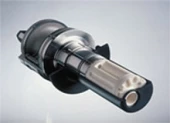
Cleanable Fiber Probes with Process Interfaces
Art photonics GmbH

Gas Transmission Infrared Fiber Optic Probe for Gases (Chalcogenide IR)
Art photonics GmbH

Gas Transmission Infrared Fiber Optic Probe for Gases (Silica)
Art photonics GmbH

Fiber Optic TransFlex Probe (CIR)
Art photonics GmbH

Fiber Optic TransFlex Probe (Silica Vis-NIR)
Art photonics GmbH

Fiber Optic TransFlex Probe (Silica UV-Vis)
Art photonics GmbH
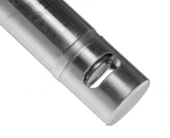
Fiber Optic Transmission Probe (Silica Vis-NIR)
Art photonics GmbH
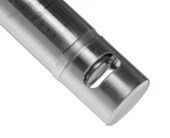
Fiber Optic Transmission Probe (Silica UV-Vis)
Art photonics GmbH
Thank You!
Your inquiry has been received.
Create an account by adding a password
Why create an account?
- Auto-complete inquiry forms
- View and manage all your past messages
- Save products to your favorites
- Close your account anytime — no hassle
